Sign up for workout ideas, training advice, reviews of the latest gear and more.

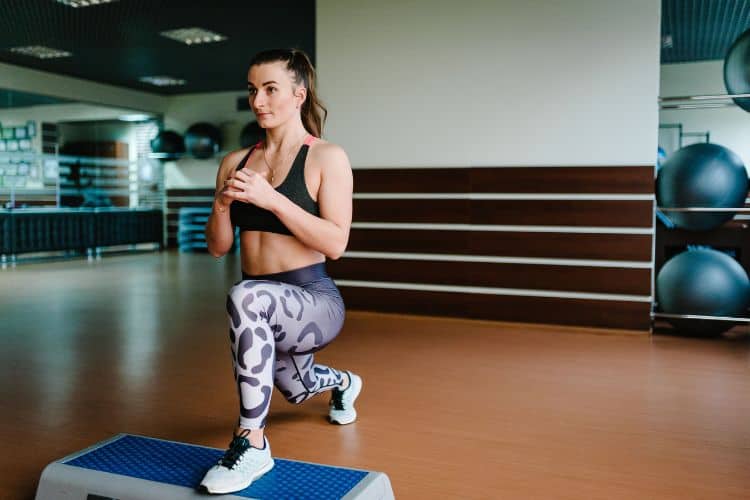
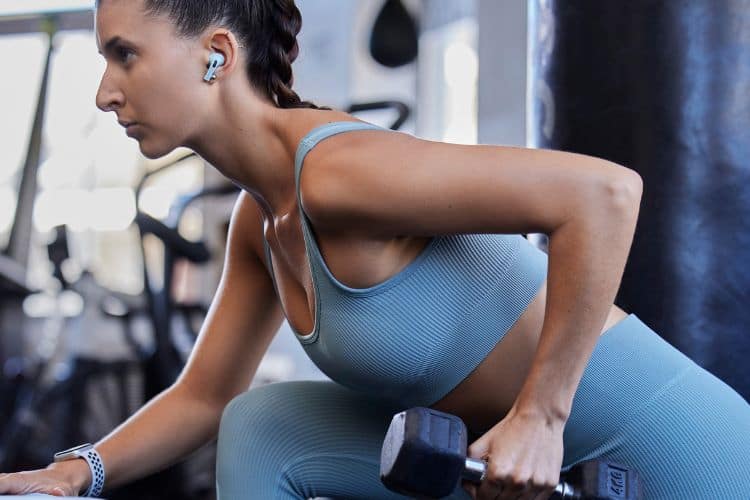
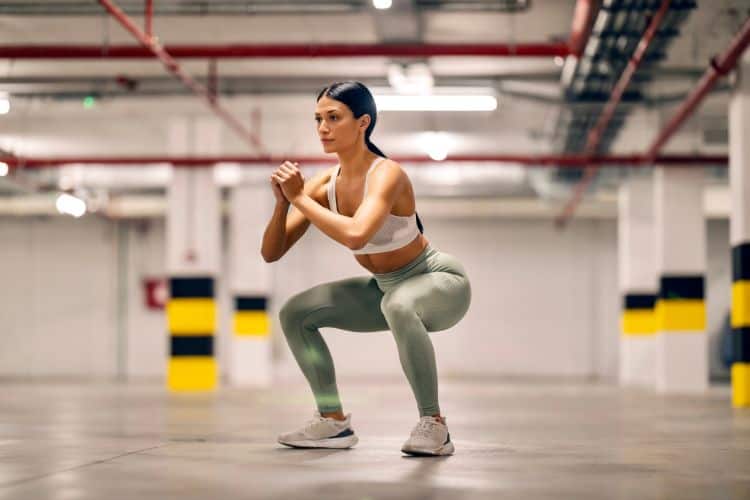
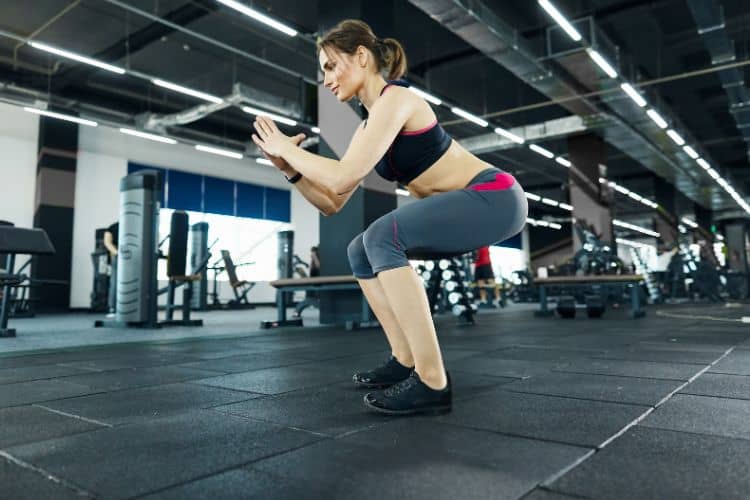
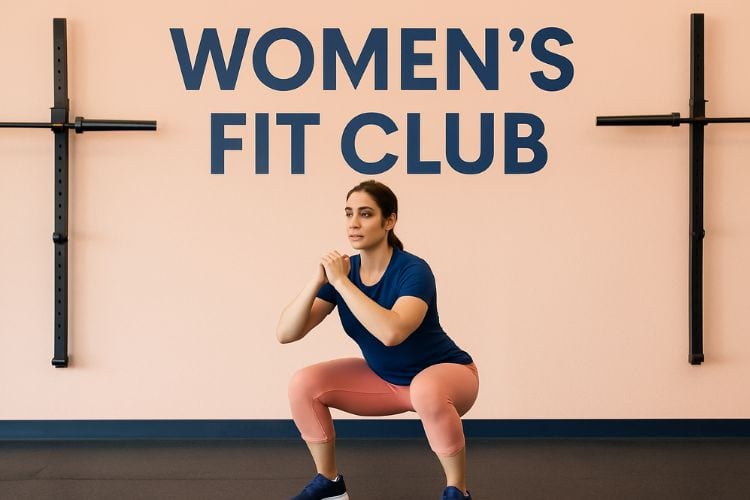
Starting a fitness journey can feel intimidating, especially if you’re new to working out or short on time. That’s where a 10-minute full-body HIIT workout for beginners comes in. High-Intensity Interval Training (HIIT) combines short bursts of effort with brief recovery periods, helping you burn fat, build muscle, and boost endurance — all in less time than it takes to brew your morning coffee.
Whether you’re exercising before work, during your lunch break, or after a long day, this quick and effective routine will elevate your heart rate, activate every major muscle group, and leave you feeling accomplished and energized. Best of all, you don’t need any equipment — just your body, determination, and ten minutes of focus.
HIIT stands for High-Intensity Interval Training. It’s a style of exercise that alternates between short, intense bursts of activity and low-intensity rest or recovery periods. For example, 40 seconds of jumping jacks followed by 20 seconds of rest.
These intervals push your body to work harder than steady-state cardio, resulting in higher calorie burn and improved cardiovascular health. Even after the workout ends, your metabolism stays elevated thanks to the afterburn effect, also known as EPOC (Excess Post-Exercise Oxygen Consumption).
Before jumping into your 10-minute HIIT workout, it’s crucial to warm up your muscles and joints. This helps increase circulation, reduce the risk of injury, and prepare your body for movement.
Perform each for 20 seconds:
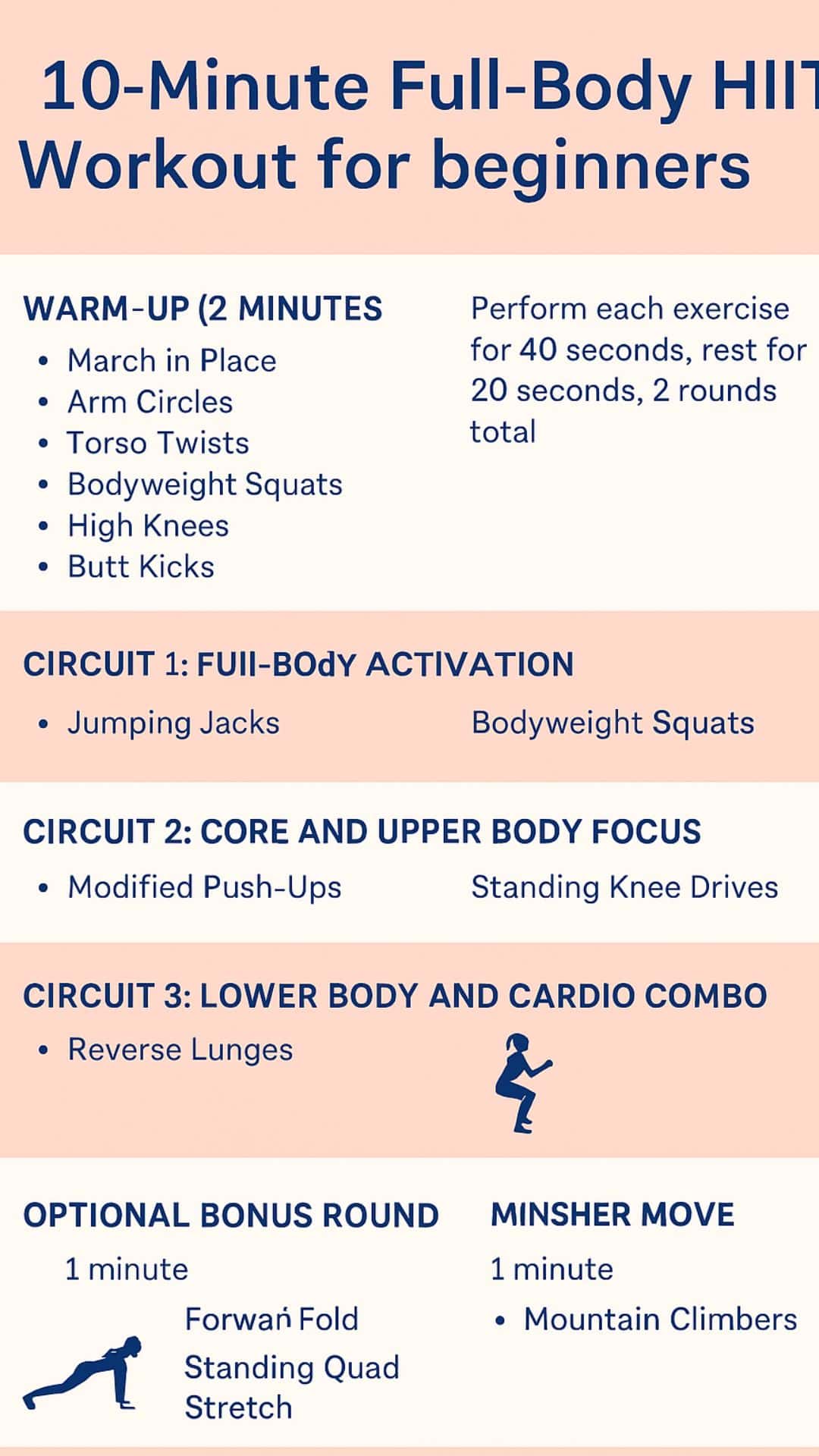
This workout includes five effective bodyweight exercises that target your legs, core, chest, arms, and shoulders. You’ll perform each move for 40 seconds, rest for 20 seconds, and complete two total rounds.
Jumping jacks are a beginner-friendly move that raises your heart rate and warms up your entire body. Stand tall, jump your feet out while raising your arms overhead, then return to starting position.
Beginners’ tip: Step side to side instead of jumping if needed.
Target Muscles: Shoulders, calves, core, and cardiovascular system.
Stand with your feet hip-width apart. Lower your hips back and down as if sitting into a chair. Keep your chest lifted and knees behind your toes, then drive through your heels to stand up.
Beginners’ tip: Only go as low as comfortable and keep your weight in your heels.
Target Muscles: Quads, hamstrings, glutes, and core.
Start on your knees with hands slightly wider than shoulder-width. Lower your chest toward the floor, keeping your core tight and elbows at a 45-degree angle. Push back up to start position.
Beginners’ tip: Perform against a wall if floor push-ups are too challenging.
Target Muscles: Chest, shoulders, triceps, and core.
Stand tall and raise your right knee toward your chest while bringing both arms down, as if driving your knee into your hands. Repeat quickly on one side for 20 seconds, then switch sides.
Beginners’ tip: Move at a steady pace to maintain balance before increasing intensity.
Target Muscles: Core, hip flexors, and shoulders.
Step your right foot back into a lunge, lowering your back knee toward the floor while keeping your chest upright. Return to standing and switch legs.
Beginners’ tip: Hold onto a wall or chair for balance.
Target Muscles: Glutes, hamstrings, quads, and core.
If you’re feeling strong and want an extra challenge, end your session with a 1-minute finisher:
Get into a high plank position with your hands under your shoulders. Quickly drive your knees toward your chest in an alternating running motion.
Beginners’ tip: Slow down the pace or perform on an elevated surface like a countertop.
Benefits: Increases endurance, strengthens your shoulders, arms, and core, and gives your heart a final cardio push.
After your HIIT workout, spend a couple of minutes stretching to relax your muscles and improve flexibility.
For beginners, start with 2–3 HIIT workouts per week with at least one rest or low-intensity day between sessions. As your endurance improves, you can gradually add more sessions or extend your workout duration to 15–20 minutes.
Avoid overtraining; recovery is essential to building strength and preventing burnout. Complement your HIIT routine with walking, stretching, yoga, or light strength training on alternate days.
Always prioritize proper technique before increasing your intensity. This ensures better results and reduces injury risk.
Inhale during the easier phase of a move and exhale during exertion. Controlled breathing helps maintain rhythm and endurance.
There’s no shame in starting slow. Modify high-impact moves (like jumping jacks or mountain climbers) by performing low-impact versions until your stamina improves.
Record how many reps you complete each round. Over time, you’ll notice improvement in speed, form, and endurance — key indicators of progress.
Even short 10-minute sessions done regularly can lead to noticeable changes in strength, tone, and energy levels.
HIIT triggers multiple physiological responses that make it a superior time-efficient workout.
Even at just 10 minutes, HIIT can rival or surpass traditional 30–40 minute cardio workouts when performed at proper intensity.
Many beginners hesitate to start because they think fitness requires hours of training or expensive equipment. This 10-minute full-body HIIT workout eliminates those barriers.
It offers:
By focusing on short, high-impact intervals, you’ll build confidence, improve fitness, and develop a sustainable workout habit.
| Day | Workout | Duration | Notes |
|---|---|---|---|
| Monday | 10-Minute Full-Body HIIT | 10 min | Keep moderate pace |
| Tuesday | Active Recovery (Walk or Yoga) | 20–30 min | Gentle movement |
| Wednesday | 10-Minute Full-Body HIIT | 10 min | Increase intensity slightly |
| Thursday | Rest or Stretch | — | Hydrate well |
| Friday | 10-Minute Full-Body HIIT | 10 min | Push yourself |
| Saturday | Light Cardio (Dance, Bike) | 20–30 min | Fun movement |
| Sunday | Rest | — | Reflect on progress |
Your nutrition plays a vital role in maximizing energy and recovery.
Consistency is the cornerstone of success. Keep a workout journal or use a fitness app to log your sessions, reps, and perceived exertion.
Celebrate small milestones — completing extra reps, reducing rest time, or feeling less breathless — because each represents real improvement. Pair your routine with motivational playlists or workout buddies to stay inspired.
A 10-minute full-body HIIT workout for beginners is proof that time is no excuse for skipping exercise. These short sessions provide an efficient way to boost metabolism, strengthen muscles, and improve overall health — no gym required.
By committing to just 10 minutes a day, you’re investing in a healthier, stronger, and more confident version of yourself. Remember, every rep counts — and showing up is half the battle.
Stay up to date on the latest women’s health, fitness and lifestyle trends and tips.